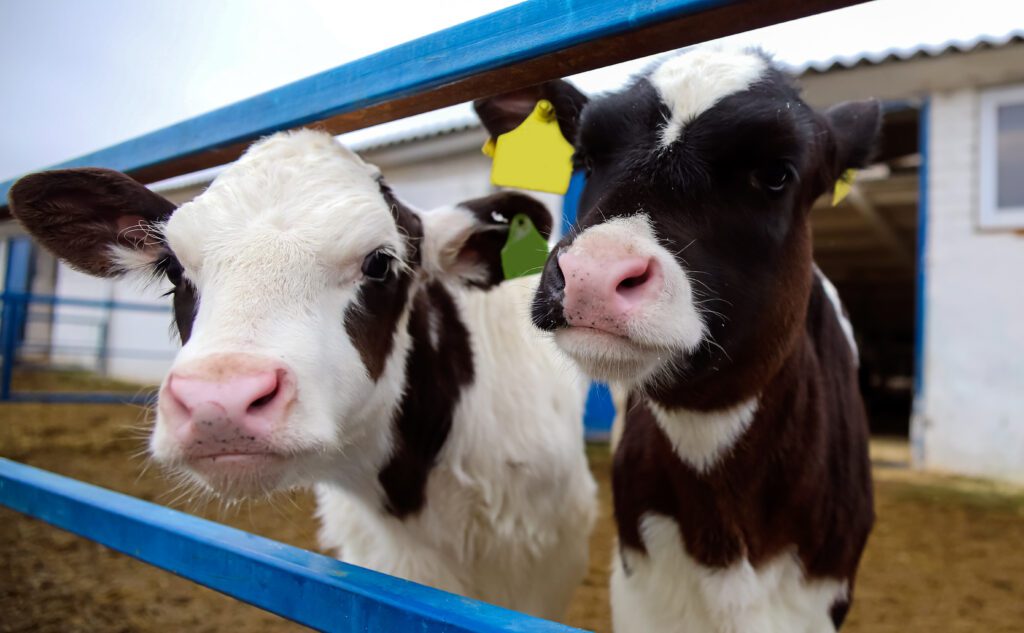New Study Discovers Human Interaction May Reduce Calves’ Stress During Important Life Stage
by STELLA CANFIELD, UF/IFAS correspondent
In a new study published in the journal JDS Communications, scientists at the University of Florida have discovered that human interaction with calves helps to reduce abnormal oral behaviors and increase rest during early life.
As part of an ongoing effort to enhance dairy cows’ lifelong welfare, this research is related to a previous study looking at how housing young calves in pairs and larger social groups may allow them to develop better social skills and produce more milk as a cow later in life. Building off these aims, this latest study sought to learn whether human contact provided additional complexities and enrichment in dairy calves’ environment during weaning.
The weaning period is a stage in which calves’ milk intake is decreased to encourage them to start eating more solid foods like grain and hay. However, for most calves, the weaning period is very stressful as they’re limited in their milk consumption. As a result, many calves start to exhibit abnormal oral behaviors like sucking on pen fixtures or other calves.
“Calves are naturally motivated to suck because it’s how they consume their milk. However, calves can start doing this a lot if their environment is restrictive or if they’re hungry and stressed. When this happens, we call that behavior abnormal,” says Emily Miller-Cushon, lead investigator of the study and an associate professor in the UF/IFAS department of animal sciences.
In the study, 14 individual calves and 14 pairs of calves were followed for the first eight weeks of life until the weaning period began. Once weaning started, a human would enter the pen and spend five minutes scratching the calf on certain days following feeding.
After six months of data collection, the study found individually housed calves performed more abnormal oral behavior than pair housed calves, but human contact reduced it. The results also showed that, regardless of whether the calves were housed individually or in pairs, human presence increased the amount of time calves laid down after feeding — suggesting a calming effect.
“It could be some effect of scratching and tactile stimulation, or it could just be the novelty and interest the calf had,” says Miller-Cushon. “But either way, having a human in the pen redirected calves from some of these abnormal oral behaviors.”
With this knowledge, researchers can better understand the role human interaction plays in calves’ overall well-being.
“These findings indicate that more complex environments and calf stimulation are beneficial when it comes to reducing abnormal behaviors and enhancing their lifelong welfare, including their health, performance, emotional state and socialization,” Miller-Cushon explains.
In other words, a little bit of social contact, whether from humans or other calves, goes a long way to reducing stress in these animals.
These insights may also help dairy farmers. Protocols for reducing milk gradually are the most important consideration for calf welfare during weaning. However, dairy farmers may also be able to devote a few extra minutes to scratch a calf’s neck or provide extra stimulation to reduce stress during weaning.

